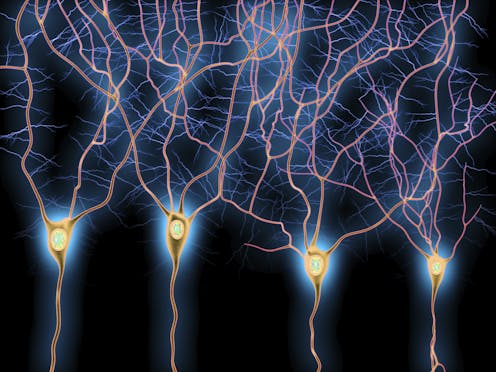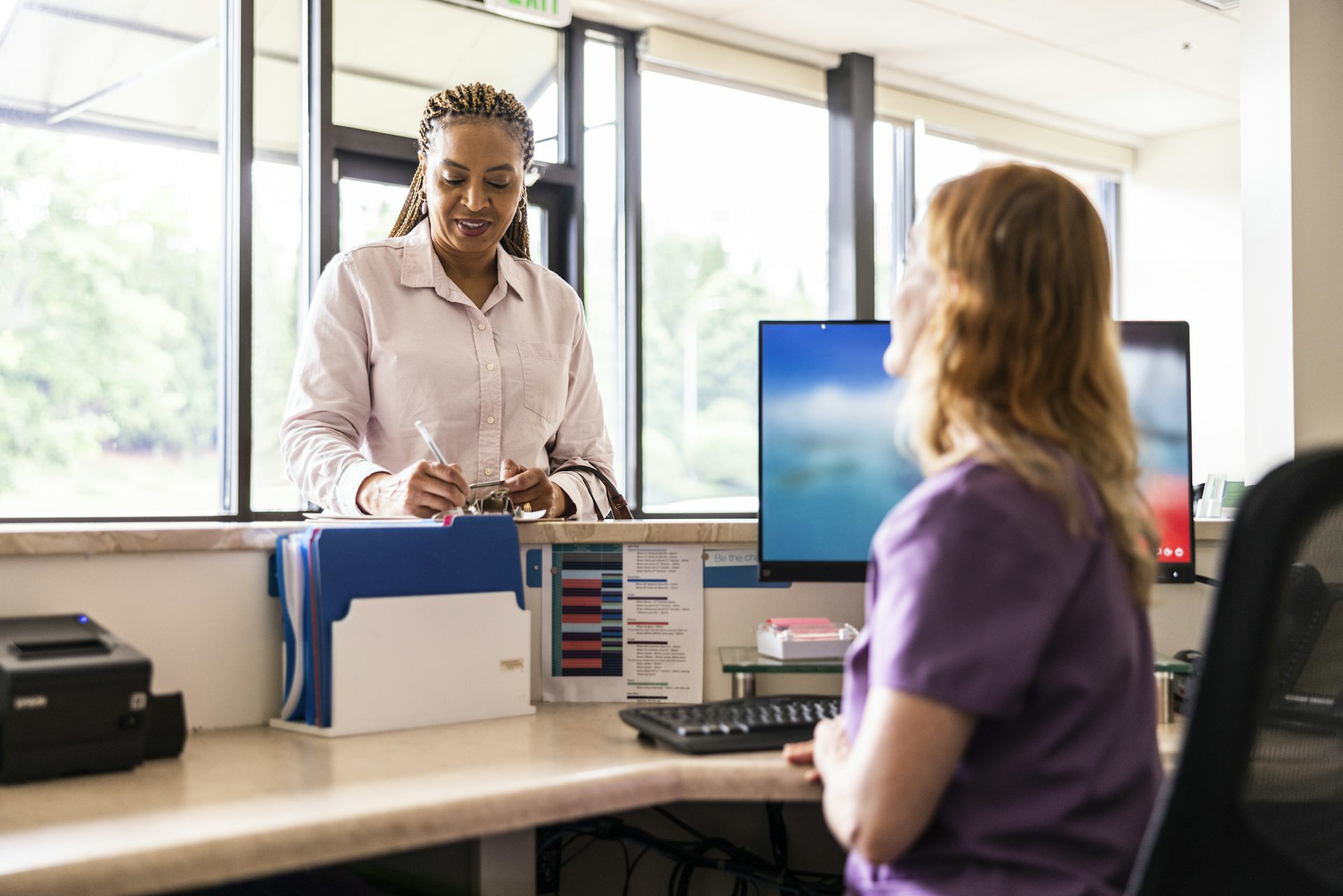Memories of the good parts of using drugs can keep people hooked − altering the neurons that store t
Your brain processes the pleasure of everyday behaviors like eating and drinking similarly to the pleasure of using drugs. Disentangling them requires understanding how memories are formed.

Everyday human behavior is guided and shaped by the search for rewards. This includes eating tasty meals, drinking something refreshing, sexual activity and nurturing children. Many of these behaviors are needed for survival. But in some instances, this search for rewards can pose a significant threat to survival.
People rely on memories of rewards to function and survive. Associated with positive experiences, these memories provide context for evaluating present and future choices. For example, if foods high in sugar are associated with a positive experience, this can reinforce the behavior of eating the food that provided the reward. Similarly, a flavorful meal at a specific restaurant increases the likelihood you’ll become a returning costumer.
A deeper understanding of how reward memories work and interact with each other is critical to informing the choices you make and to treating disorders where seeking rewards has become problematic. Eliminating all reward seeking would negatively affect behaviors essential for survival, such as eating and reproducing. But if you can specifically target reward memories linked to different drugs, this could help reduce their abuse.
I am a behavioral neuroscientist studying addiction, and my team is interested in how reward memories are formed and processed in the brain. We study how memories linked to natural rewards such as food, water and sex differ from those linked with rewards from drugs such as fentanyl and cocaine.
Understanding the differences between these types of rewards and how memories of different drugs interact may lead to more effective treatments for addiction.
What is memory?
To study reward memories, it is important to understand the neurobiology of memory, or how the brain remembers things.
In 1904, evolutionary zoologist Richard Semon introduced the term engram to describe the physical representation of a memory – also called its trace – that forms in the brain after an experience. Later, psychologist Donald Hebb hypothesized that interconnected brain cells that are active at the same time during an experience form a physical ensemble that make up a memory.
In the past decade, neuroscientists have developed new tools that support the idea that neuronal ensembles, or small populations of brain cells that are activated at the same time, are likely the physical representation of memory. How new memories recruit neurons into ensembles is not fully understood, but the plasticity of neurons – their ability to change their connections with each other – seems to play a major role.
Research on neuronal ensembles has transformed how scientists understand learning and memory. Researchers can now create artificial memories, activate positive memories to counteract negative feelings, and alter how memories are linked. All these experiments on altering memory have been conducted on animal models, since the technology required to apply these techniques to humans is not yet available.
To create artificial memories, for instance, researchers can mark a neuronal ensemble associated with a specific environment A in genetically modified mice. They can then activate those neurons when exposing the mice to a foot shock in a different environment B. Later, the mice showed increased freezing behavior in environment A, though they never received a shock in that space. By activating the memory of environment A during the foot shock, mice created a false memory that the foot shock was associated with that space.
Treating substance use disorders
Neuronal ensembles hold untapped promise for the study and treatment of substance use disorders and other reward-related disorders. These include those involving a deficit in their ability to experience reward, such as gambling disorder, eating disorders and depression.
Natural rewards – food, water, sex and nurturing – induce pleasurable feelings that reinforce the behavior that elicits that reward. This is known as positive reinforcement, a strategy often used in everyday life; think training a dog with treats, or using sticker charts for potty training.
Research has linked positive and negative experiences with neuronal ensembles: exploratory and social behaviors, fear, and feeding. In substance use disorders, a drug can induce both pleasant and unpleasant feelings. For example, cocaine induces an intense rush or high, but the crash induced by the drug wearing off causes irritability and lethargy. These feelings reinforce drug use at the expense of essential behaviors that ensure survival, such as eating, sleeping or maintaining social networks and relationships.
Neuronal ensembles may also play a causal role in the development of multiple aspects of substance use disorders, including drug taking, drug craving and seeking behaviors, increased sensitivity to certain drugs and relapse.
How drug memory changes the brain
Similarly to how any memory is stored in the brain as a neuronal ensemble, drug memories are carried in specific neuronal ensembles and activated during drug-related behaviors.
Fundamental questions remain about how neuronal ensembles encode drug-related memories. Because the processing centers for drug rewards and natural rewards mostly overlap in the brain, it is challenging to develop treatments that target only drug reward seeking. Emerging treatments for addiction, such as certain types of brain stimulation, are not specific enough to differentiate between drug or natural reward pathways.
Discovering how particular drugs of abuse affect genes, cells and neuronal circuits can help researchers develop new treatments for substance use disorders without altering the natural reward-seeking behaviors essential for survival.

For example, about 72% of people suffering from substance use disorders report using multiple substances, frequently together. To better understand how polysubstance use affects the brain, my team tags neurons active during drug-related behaviors in genetically modified mice. This allows us to map and compare the neurons carrying reward-related memories for one drug with the neurons associated with another drug. In this way, we can study how the brain represents and stores memories when mice are exposed to cocaine and fentanyl – two substances people in the U.S. are increasingly taking together – and how different brain regions communicate this information with each other.
To dissect exactly how drugs of abuse hijack the brain’s natural reward system, my team is comparing how seeking different types of rewards changes the neurons carrying reward memories. For example, we have previously shown that the network of cells carrying the memory of seeking cocaine are mostly distinct from those linked to seeking sugar.
Based on this work, we are currently using fruit fly models to analyze the genetic activity of the neuronal ensemble linked to seeking cocaine. This will allow us to better identify which genes could be potential targets to reduce the activity of that neuronal ensemble and treat substance use disorder.
Psychedelics and addiction
Drug-related intrusive thoughts and fixed behavioral patterns – meaning actions that are repeatedly taken regardless of negative consequences – are common symptoms of substance abuse that lead to the formation of harmful neural pathways in the brain. Psychedelics may be able to help reform these pathways by triggering an overall “system reboot” of the brain.
Several clinical trials point to the potential of psychedelics to treat tobacco, alcohol and opioid use disorders, with early results showing increased abstinence and reduced drug cravings.
My lab is currently examining how psilocin – the active metabolite of the psychedelic psilocybin – affects the drug-related memories of mice. Our research focuses on two questions. First, can psilocin alter drug seeking and intake in fentanyl addiction? And second, what type of memory does psilocin create in the brain, and could it alter prior cocaine memories?
Reward memories both help people survive and lead to substance use disorders. Delving into the intricate mechanisms of how the brain remembers rewards at the cellular and genetic levels can help researchers and doctors better treat addiction without altering the reward pathways needed for survival.
Ana Clara Bobadilla receives funding from the National Institute on Drug Abuse and the Brain & Behavior Research Foundation.
Read These Next
AI’s errors may be impossible to eliminate – what that means for its use in health care
Many health symptoms can be caused by multiple illnesses – if AI can’t tell the difference between…
Tariffs 101: What they are, who pays them, and why they matter now
Tariffs are taxes on imports, but the costs don’t stay at the border.
How one Florida program reduced preterm births – and how it could serve as a model for other communi
Central Hillsborough Healthy Start offers a model of community care that helps to prevent premature…





